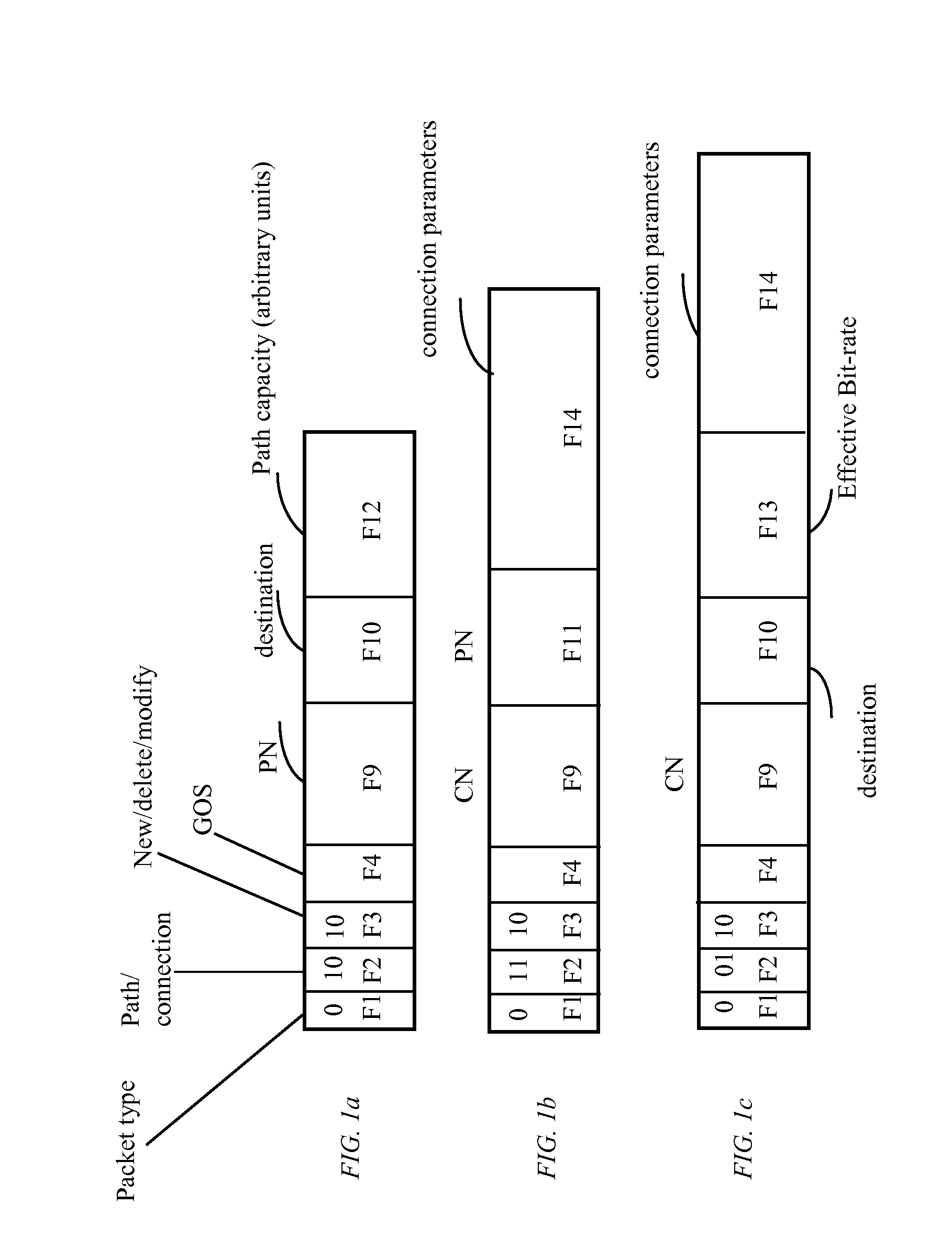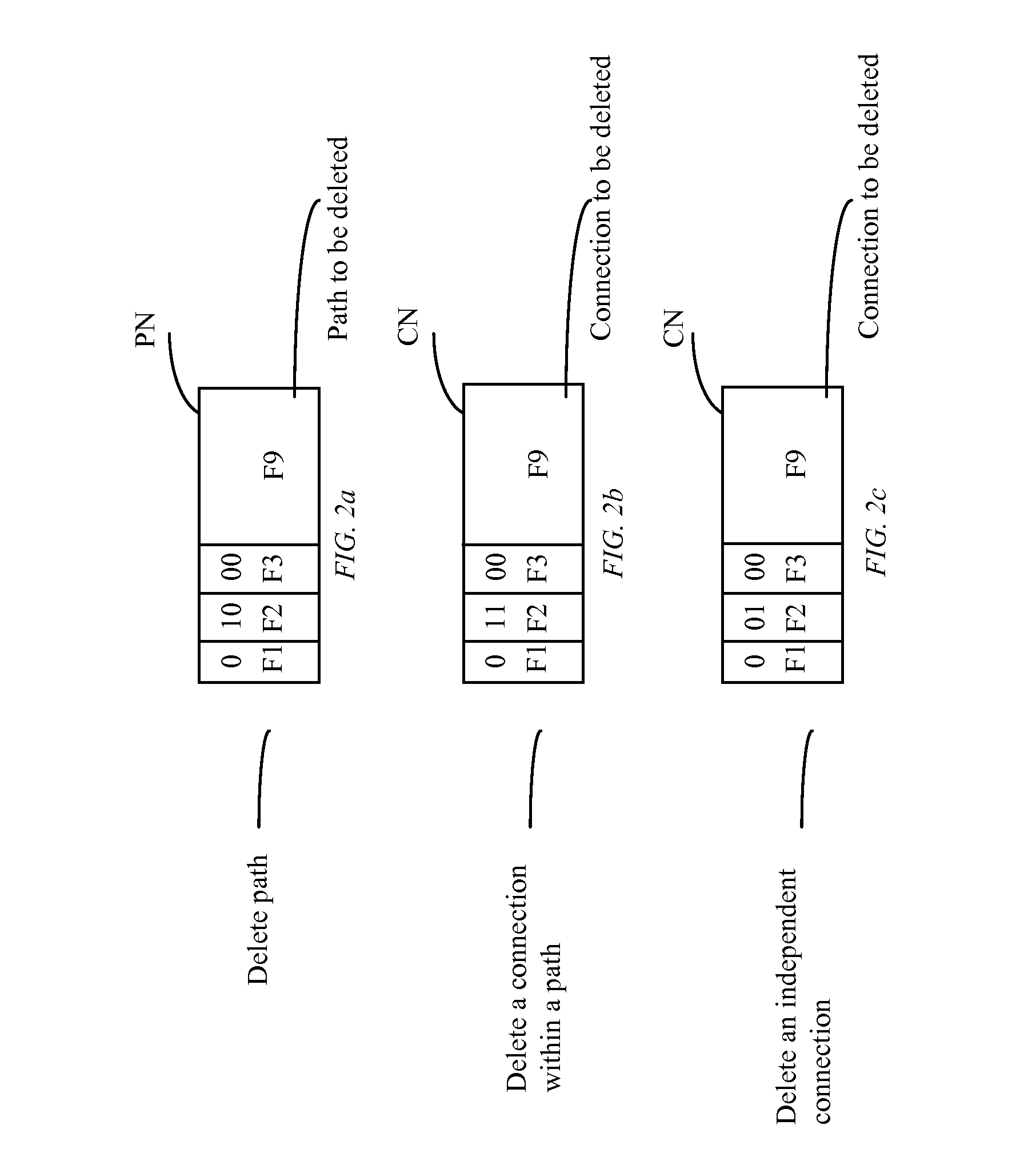Routing and rate control in a universal transfer mode network
a technology of universal transfer mode network and routing mode, applied in data switching networks, frequency-division multiplexes, instruments, etc., can solve the problems of affecting service delivery and quality of service, burdening existing infrastructure capacity, time-consuming tasks, etc., to avoid the complications of deconstruction and reconstruction of packets, improve the connection setup rate in the utm network, and improve the effect of connectivity
- Summary
- Abstract
- Description
- Claims
- Application Information
AI Technical Summary
Benefits of technology
Problems solved by technology
Method used
Image
Examples
Embodiment Construction
Definitions
[0061]In this document, the terms ‘distributed switch’ and ‘network’ are used interchangeably. A distributed switch as used herein is a network of distributed switch modules which collectively demonstrate the behavior of a single switch. The terms ‘module’ and ‘node’ are also used interchangeably.
[0062]A path means a route of specified capacity reserved between a source module and a sink module. A path may accommodate a number of connections, hereinafter referred to as connections within a path, as well as connectionless traffic. The path is preserved even though connections are created or deleted within the path.
[0063]An independent connection is established in response to a connection admission request and is dedicated to traffic associated with that request.
[0064]A traffic source in the UTM network is a device that generates data, and a traffic sink is a device that receives data. A traffic source or a traffic sink must, however, be capable of both transmitting and rec...
PUM
 Login to View More
Login to View More Abstract
Description
Claims
Application Information
 Login to View More
Login to View More - R&D
- Intellectual Property
- Life Sciences
- Materials
- Tech Scout
- Unparalleled Data Quality
- Higher Quality Content
- 60% Fewer Hallucinations
Browse by: Latest US Patents, China's latest patents, Technical Efficacy Thesaurus, Application Domain, Technology Topic, Popular Technical Reports.
© 2025 PatSnap. All rights reserved.Legal|Privacy policy|Modern Slavery Act Transparency Statement|Sitemap|About US| Contact US: help@patsnap.com



